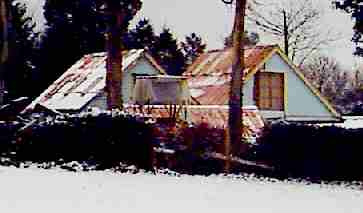|
THE
MODERN AGE OF ELECTRICITY
We
are now in the modern electrical age. We rely on
electricity for computers, to power our factories, run
our offices and our homes. This was all made
possible because of the electrical generating industry
which began with private landowners installing
generating equipment for their estates. This soon
spread as townships started up municipal supplies,
absorbing private installations as they expanded so
heralding the modern age.
Recently,
it was realised that all evidence of this important
stage in Man's development would be lost as the
archaeological remains of early installations were being
demolished unchecked. For this reason English
Heritage commissioned a Monument Protection Program in
1995, as a means to identify and preserve examples of
different types of installation.
One
such example that was nearly overlooked was the Old Steam
House at Herstmonceux in England - now Herstmonceux
Museum. The story of how
this building came to be recognised by English Heritage,
the County Archaeologist and others is a lesson to
public authorities to tend to their duty to protect the
historic built environment, rather than steamroller
protest as to injustice. This local administration
had taken a dislike to the occupier, after neighbours
with good connections wanted to purchase his barn
building and he'd refused to sell.

No
restoration can begin until dispute resolved - still
ongoing 2023
In
1987 Kruschandl's local council told the Planning
Inspectorate his home held no history worth preserving.
Nelson applied again in 1995 and this time the council
employed a specialist conservationist, Chezel Bird, who
presumably having been instructed not to assist the
applicant, failed to consult English Heritage as
required by Government guidelines. This
application was also taken to appeal and once again the
Planning Inspectorate accepted Wealden District
Council's assertions in good faith. Nelson
continued to lobby local councillors then later in 1997
he was introduced to a gardener named Ron Saunders.
Ron had worked on the estate in 1936 and remembered
seeing the generating machinery and batteries in situ.
He went on to explain that his father was an engineer
who operated the equipment.
Armed
with this new information Victor
applied again in 1998
to save the building by means of a conversion.
This is the usual way old buildings find a beneficial
use and become restored. Unfortunately for Nelson,
his local authority was so corrupted, it's high ranking
officers misdirected the elected members to ignore the
obvious local history in favour of further obstructing
the applicant. Their head of legal services, Victorio
Patrick Scarpa actually stood up and advised the
committee "we don't want to give permission to this
applicant." This treatment is unlawful
according to the Human Rights Act 1998. However,
it would appear from the evidence that this council does
not recognise the rights of the individual but rather is
a law unto itself. This was later brought home
when a Mr Chester Hudson learned from Wealden's files
that they knew what the building was in 1985, but had
buried the evidence.
Undaunted,
Victor applied again in 1999 and this time sought the
advice of English Heritage and the County
Archaeologist independently, where it was certain
Wealden Council would avoid doing anything which might
reveal their long term deception. An article in
the Evening Argus netted the 1911
operating instructions missing from Amberley Museum,
when a member of the public realised what he'd bought at
a boot fair. Where the Royals
are not in a position to become directly involved in run
of the mill cases, English
Heritage did what they could to persuade Wealden
Council to do the right thing - in this case - that
being not very much, unfortunately. Begging the
question, is this prestigious organisation fit for
purpose?
During
the course of his investigations, Kruschandl met a number of
persons complaining of heavy handed treatment, involving
the same corrupt
officers in his local Council's legal and planning
departments. It seems he was not alone. The
lack of policing of the planning system encourages
corruption - planning favours - brown envelopes and the
like. Corruption in local administration, apart
from the obvious criminal implications, is such a waste
of resources, where bent officers get rich (usually long
serving officers in peach positions). Recognising
this loophole, the Nolan Committee, now Neil Committee,
suggested admitting a new crime to the statute books way
back in 1997. These recommendations have not been
acted on, but we remain hopeful that the many examples
of injustice now surfacing will persuade those
responsible for law and order to act to quash this
particular form of white collar crime
Herstmonceux
Electricity Generating Works Circa. 1900 - 1936
Introduction
| Instructions
| ISBN
| Batteries
| Boiler
Room | Floor
Plan | Ron
Saunders
Industrial
Revolution
| Lime
Park | Machinery
| Map
| Power
House | Argus
1999
Public
Supply | Roof
Construction | Rural
Supply | Sussex
Express 1913 |
Conclusion
Archaeology
South East |
East Sussex CC
| English Heritage
| SIAS
| Sx Exp 1999
Herstmonceux
Links Page
Wentworth
House
SITE
INDEX | HOME
|